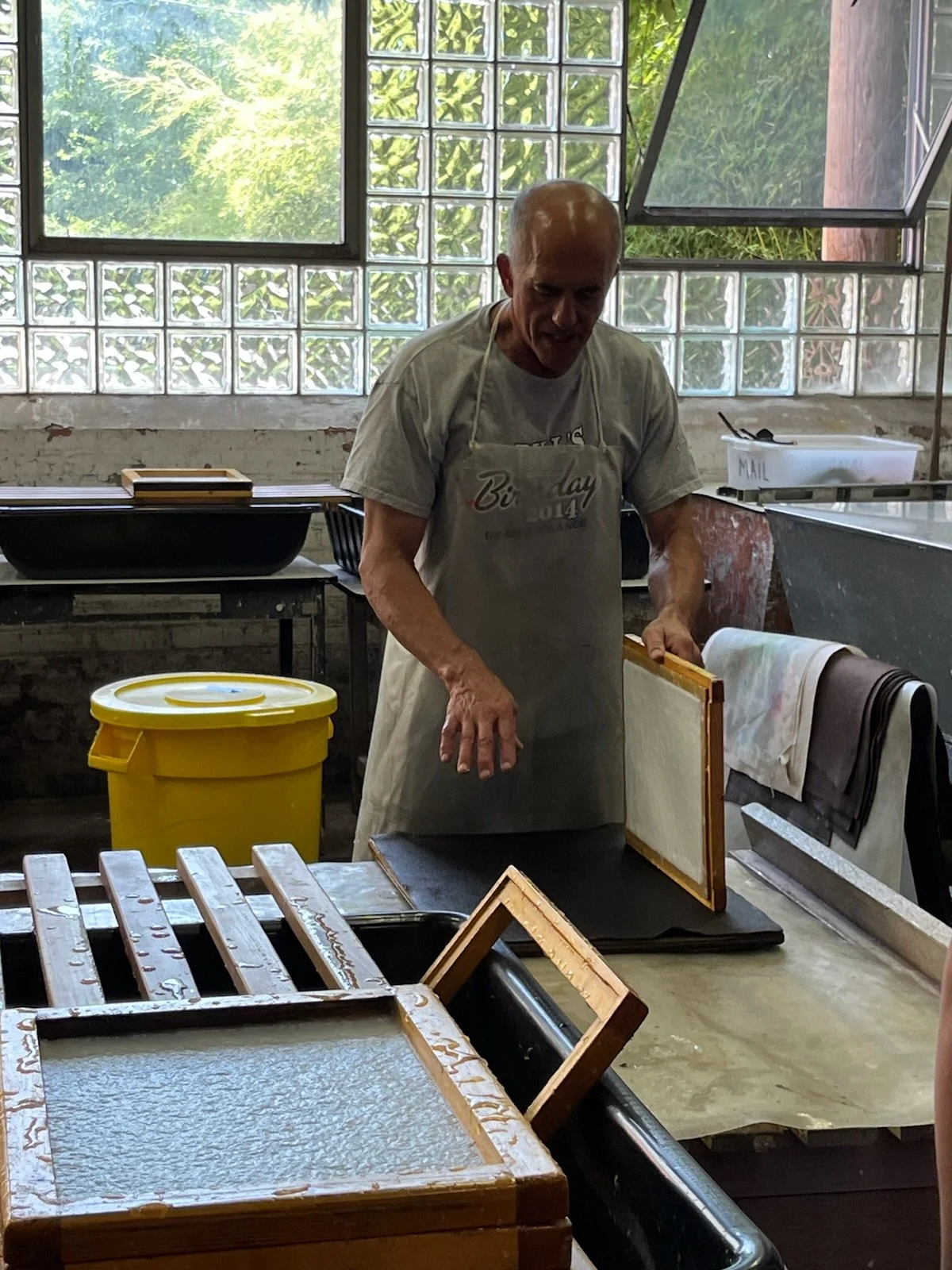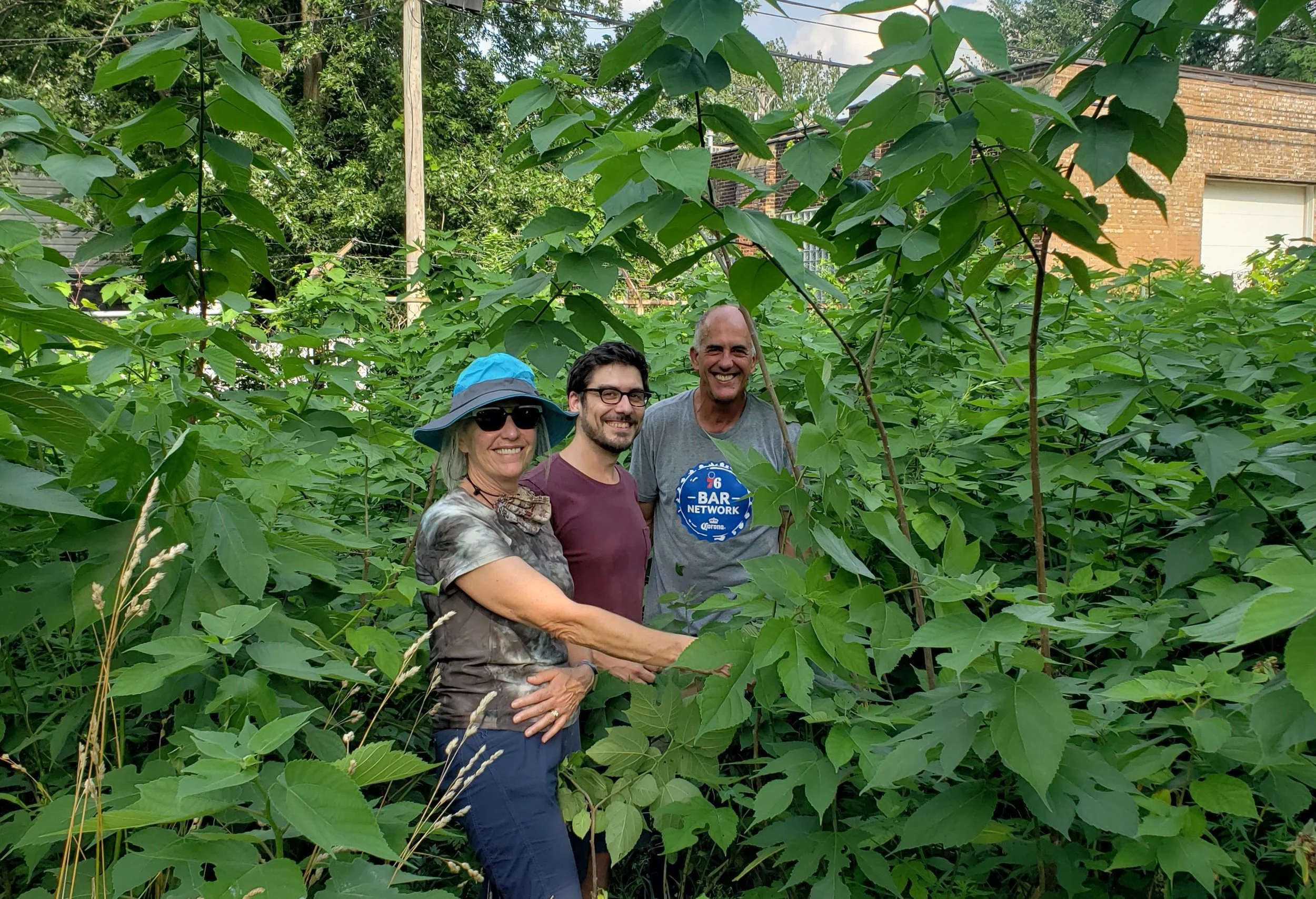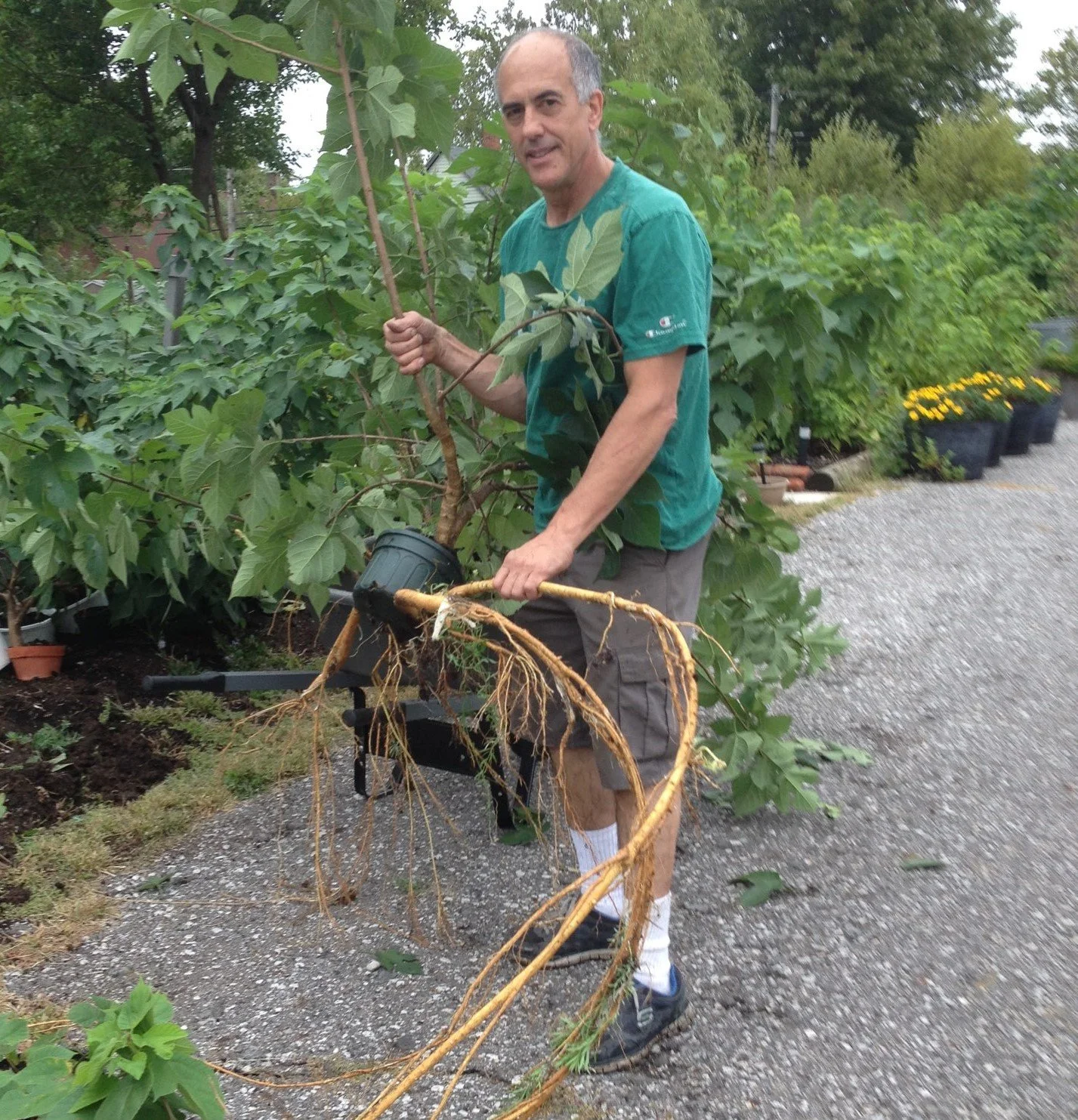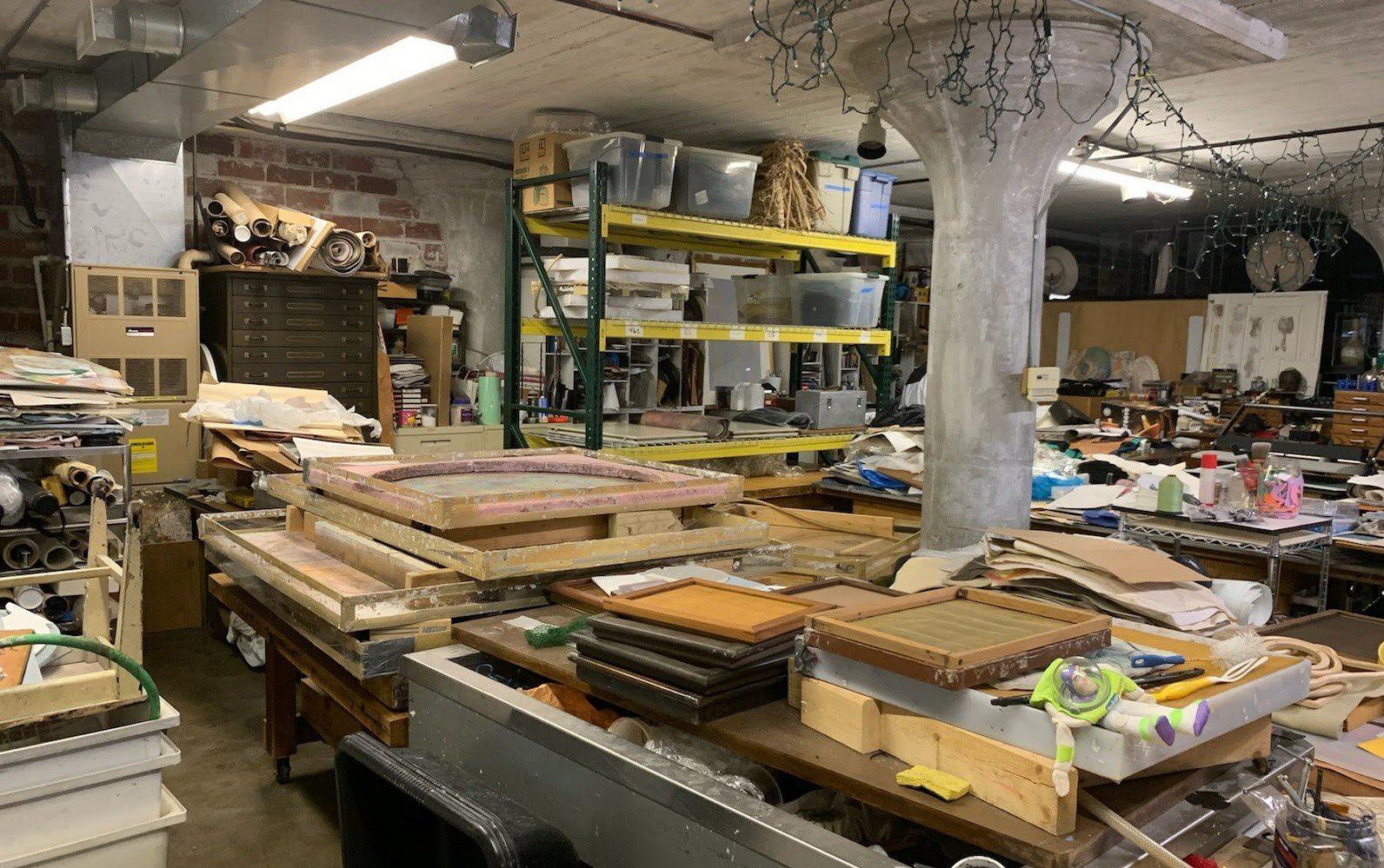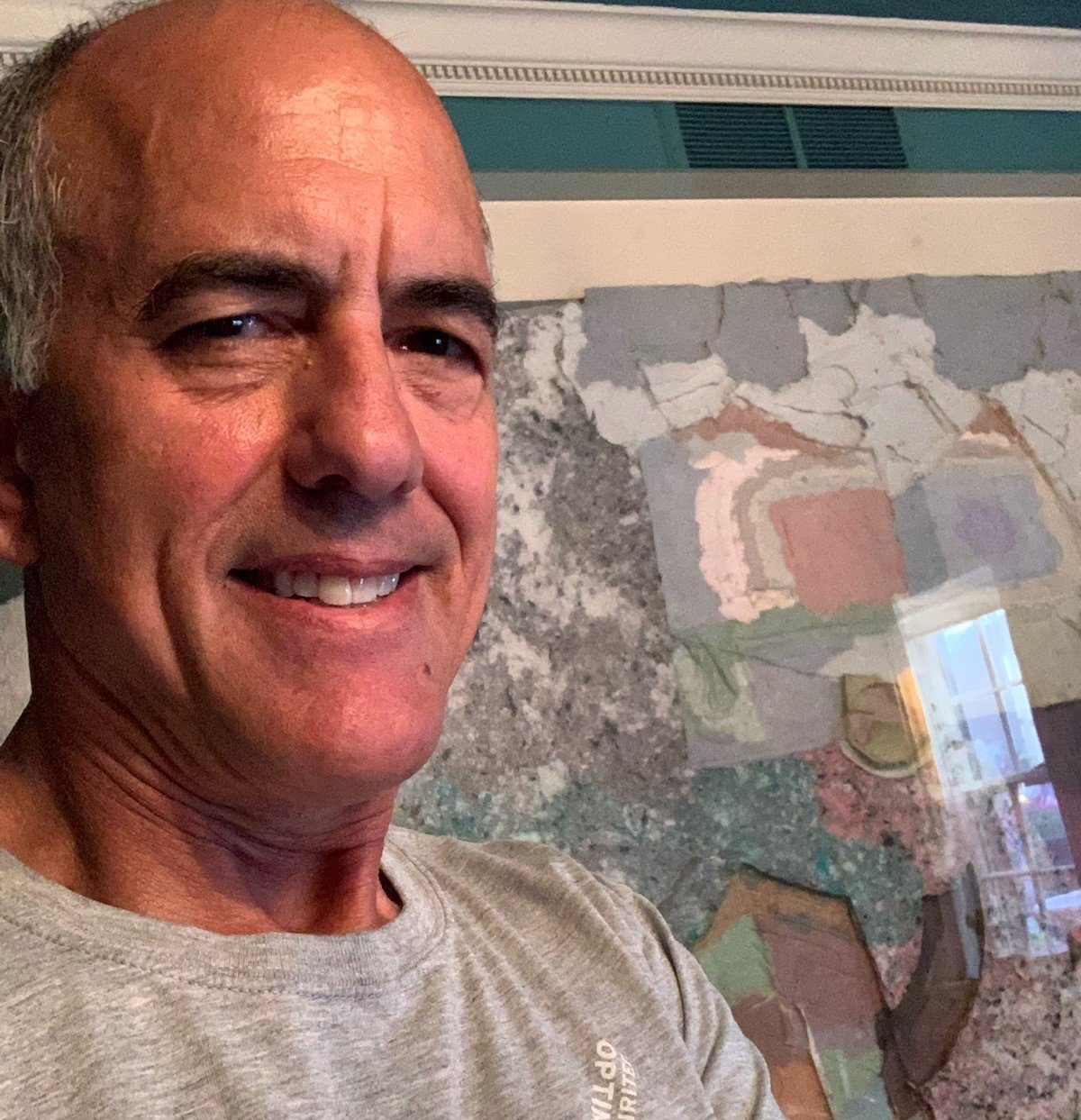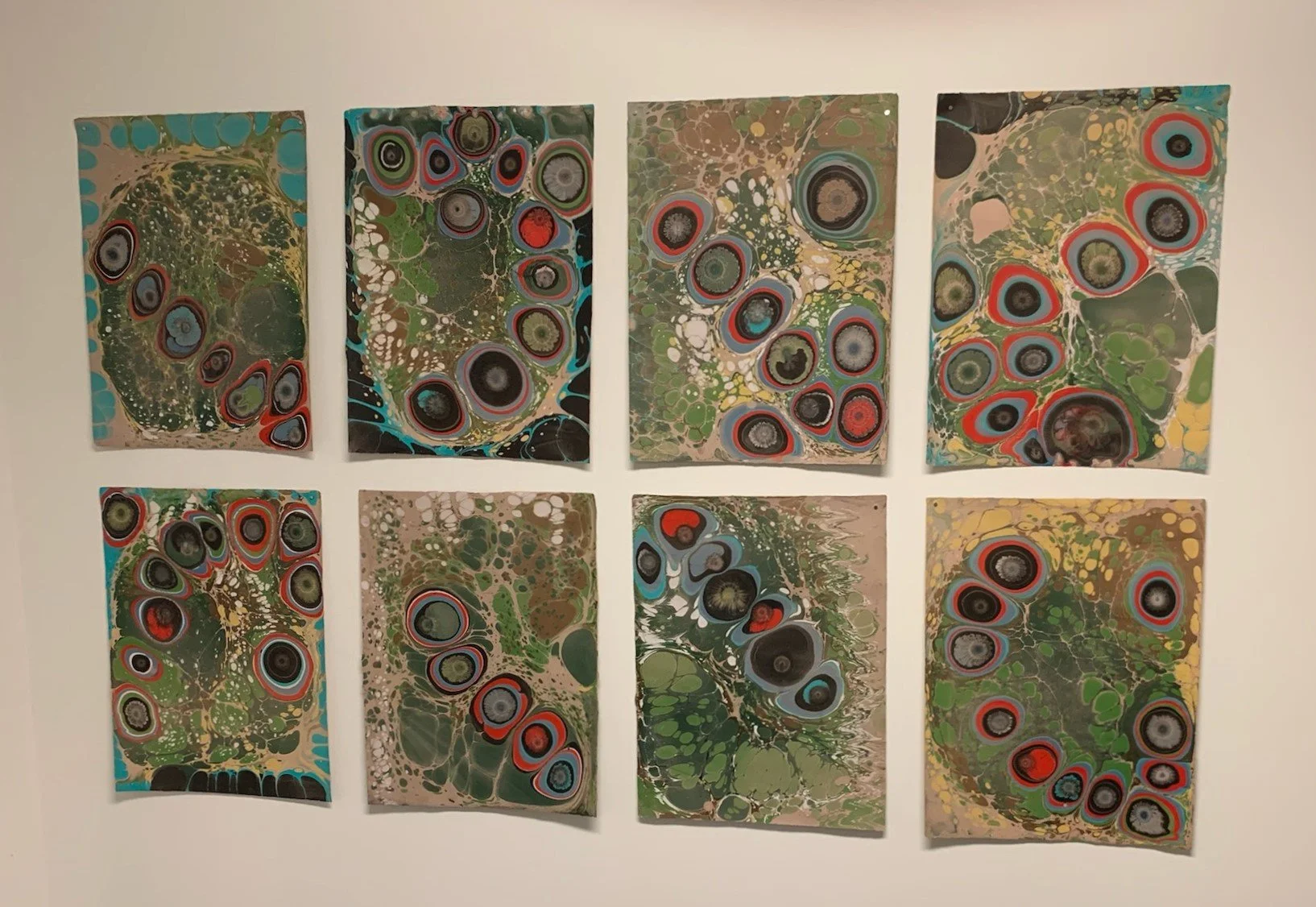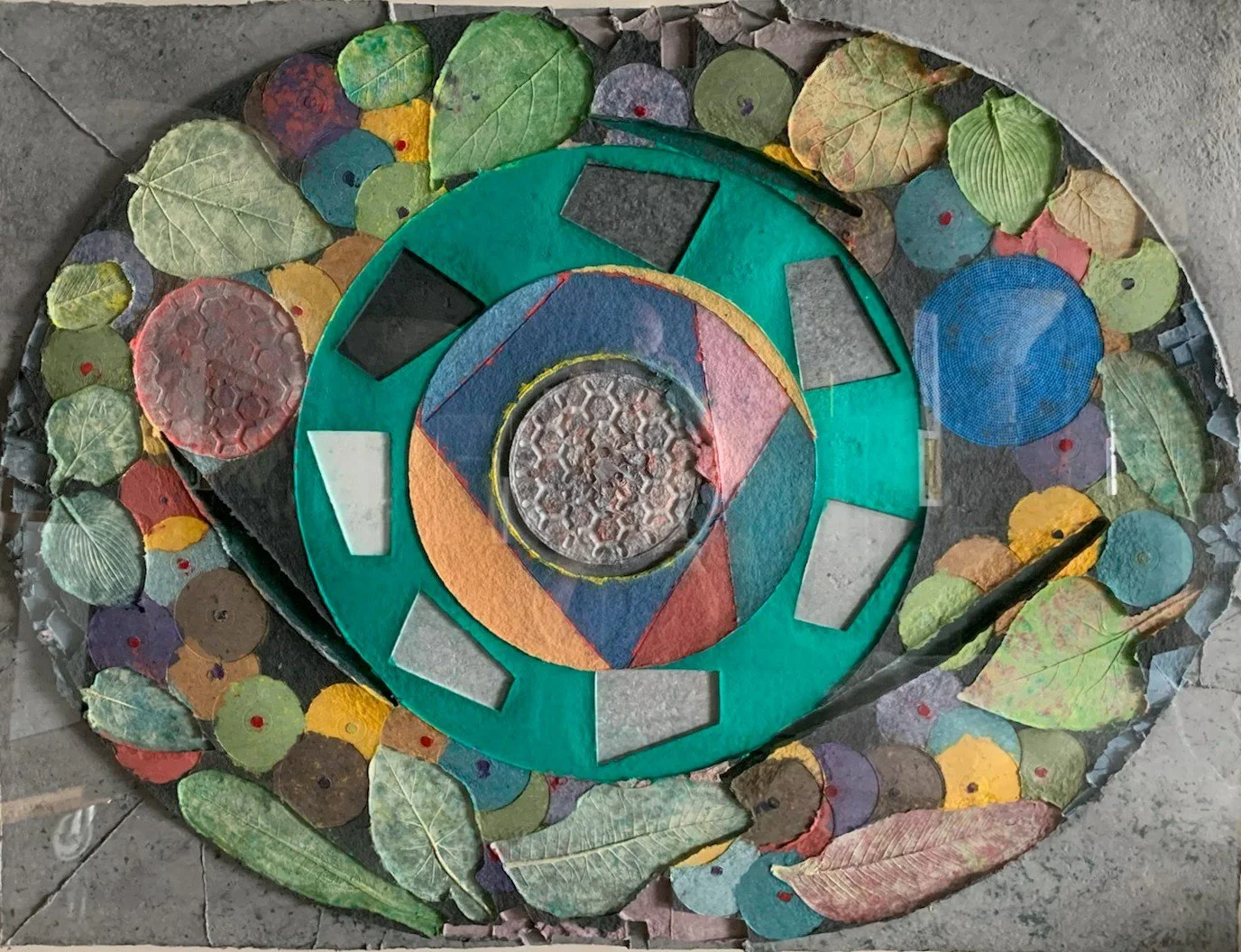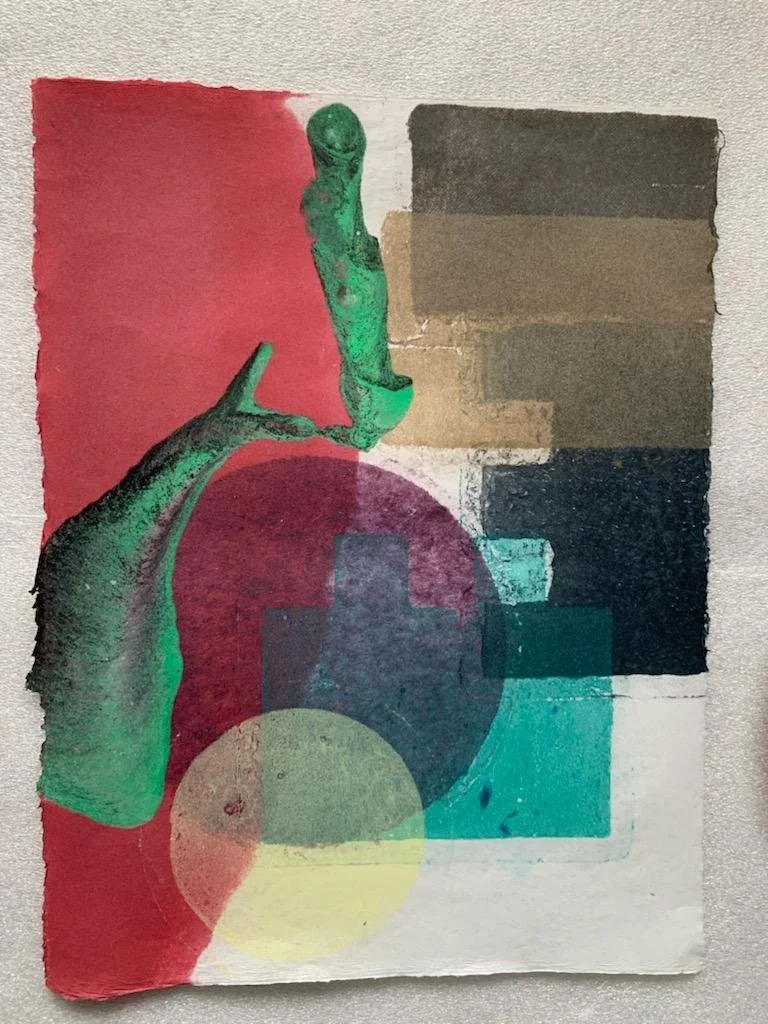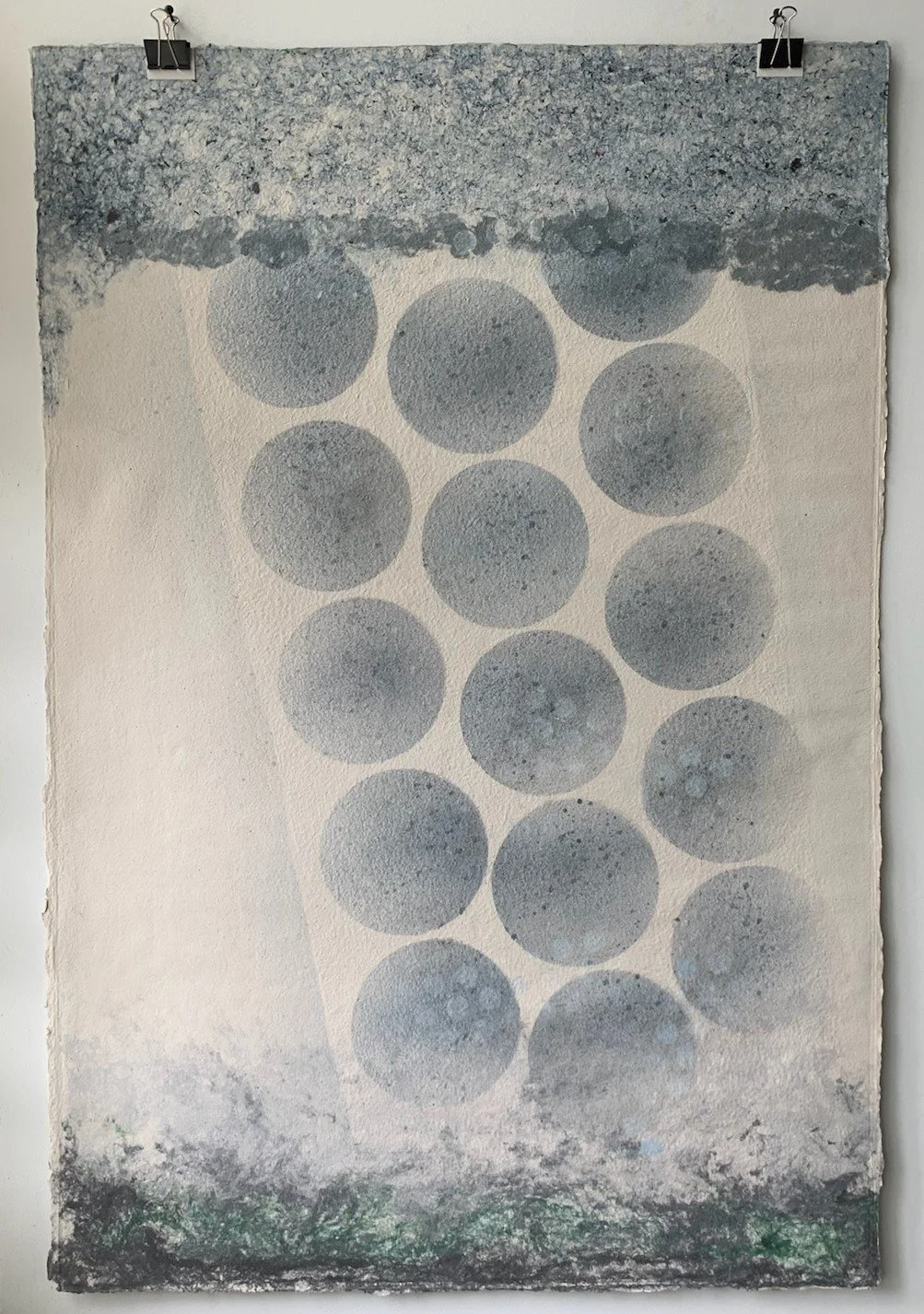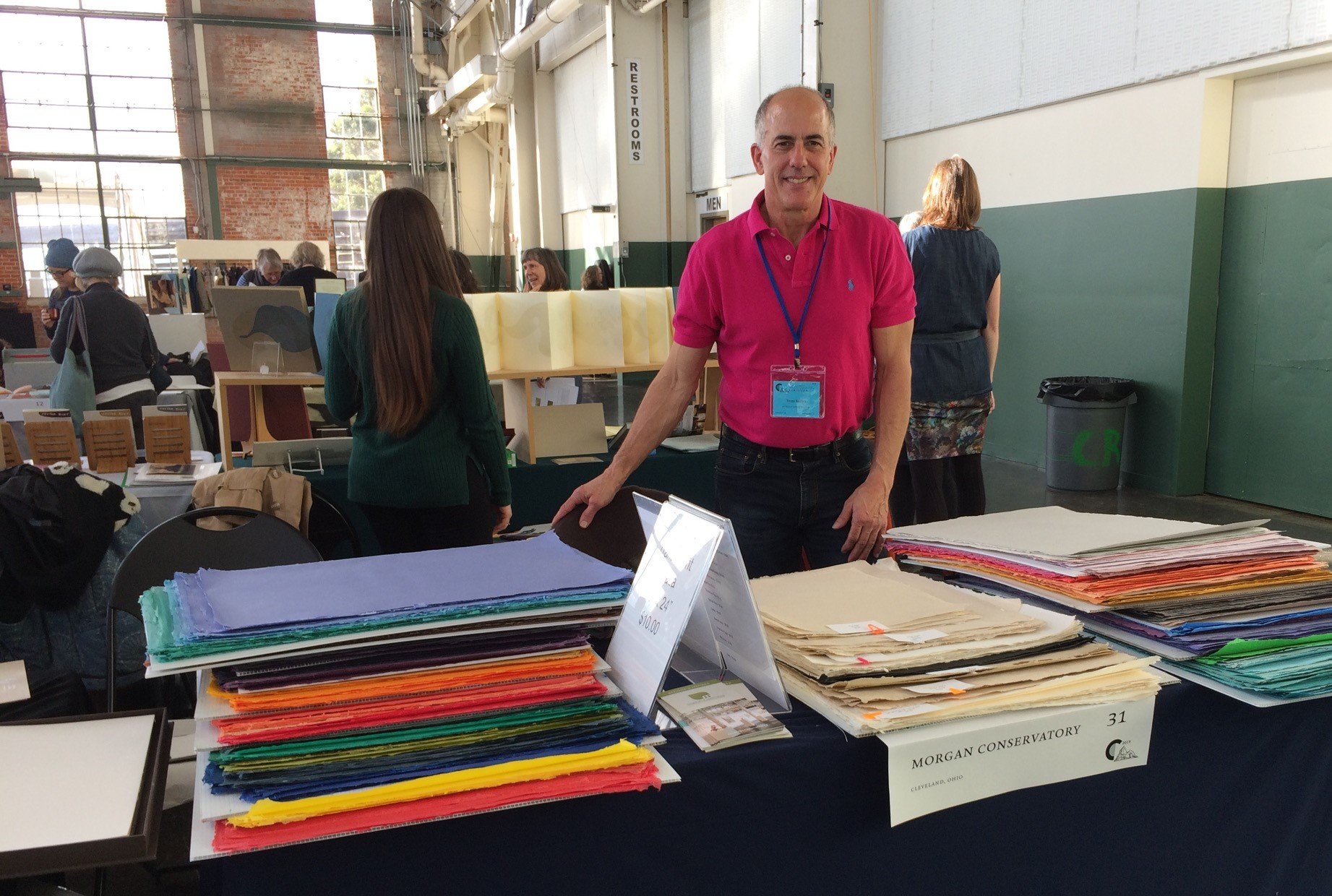
Tom Balbo
PAPERMAKING CHAMPION
During his more than 40-year career as an artist working in paper, Tom has helped to establish pulp painting as a recognized art form. In the same time period, as an instructor and advocate, Tom mentored a generation of young papermakers and paper artists who carry forward his enthusiasm and sense of discovery. In 2008, Tom founded the Morgan Art of Papermaking Conservatory & Educational Foundation in Cleveland, Ohio, a leading center in the US for paper-related workshops, classes, and exhibitions.
Tom Balbo
Essay by Julie McLaughlin
I was asked to write this essay about Tom Balbo because we have been good friends for years. But frankly, many of his colleagues could have stepped up to this task since one of his numerous attributes is his ability to quickly make friends through his infectious enthusiasm for art and life. He listens, encourages, and motivates countless new and established artists, especially in the field of papermaking.
It has been hard to separate Tom Balbo, the papermaker and artist, from his role as the founder of the Morgan Art of Papermaking Conservatory and Educational Foundation, the papermaking and book arts nonprofit in Cleveland, Ohio. Early on and for several years, Tom had been thinking about a facility for artists to gather and work. He had conversations with other area artists and received generous funding from Mr. Charles E. Morgan (Tom was his close friend and caregiver for many years) to realize his dream beginning with the purchase of a 15,000 square-foot building in 2007 and the first public opening of the Morgan Conservatory in October 2008. Tom has, on many occasions, commented on the overwhelming support and generosity from the community during this opening. The Morgan has since grown into a premier arts organization with a large papermaking studio, letterpress studio, bindery, and gallery. In addition to the great physical space, an artist-in-residence and internship programs were established along with a full slate of yearly workshops. Part of the large parking lot behind the building became the Sam Caraboolad Garden, home to many papermaking and natural-dyeing plants. It includes one of the largest, cultivated kozo gardens in the US. After 15 years of consistent devotion, Tom stepped down from his position as Artistic Director to pursue his personal artistic interests. He is now Papermaker Emeritus of the Morgan, where he continues to mentor aspiring papermakers. He will continue to be the “face” of the Morgan for many years to come.
Of course, there was a life before the Morgan Conservatory. Tom is one of the few artists I know who started his collegiate studies by way of athletics (he was a pole vaulter) and after declaring several majors discovered the world of art in his junior year at Baldwin Wallace College in Berea, Ohio. After receiving a fellowship from Syracuse University, he completed his MFA in visual and performing arts. While at Syracuse, his early work focused on ceramics and printmaking, but then an opportunity arose to work within the school of forestry where he began to experiment with papermaking, and the seed was planted. He also received a Ford Foundation grant during that time. Tom’s early influencers include Tim Barrett and Bill Drendel. He met Bill at a joint conference of the Friends of Dard Hunter and IAPMA in 1987. Bill convinced him to attend the Paper Book Intensive where Tom took his first papermaking class with Mina Takahashi. He has never looked back and serves as one of the co-directors for PBI.
Tom started selling his work at art fairs while in college, but when the scale of his work increased, he quickly realized the need to start researching galleries that would be a good match for his work. He spent countless hours knocking on doors, presenting slides and applications to numerous places nationwide, tasks that many can relate to from their own creative journeys. At one time he was represented by over 20 galleries and had great success selling his work.
We all admire his tireless work ethic and ability to switch gears effortlessly. Many of his friends and colleagues realize that for Tom, taking a break from what you are doing means going to another project, not going for a cup of coffee and a chair! Tom has admitted that his mind works in a fractured way, which allows him to juggle several projects throughout the day. He doesn’t begin and finish one piece before starting another but rather he works in a series. His spontaneous approach creates a cyclical flow of inspiration. Tom has that special ability to embrace and let things happen by chance. He encourages others to take risks and allow chance in their work.
Tom’s need to create is paired with his need to collect and repurpose. A perfect example of Tom’s ability to repurpose would be his use of old windshield wipers, of all things, to scrape excess water off felts, tables, and vats during the papermaking process. His paper castings stem from old ceramic leftovers and other objects that create texture and dimension in his work.
If you’ve been lucky enough to have visited Tom’s artistic spaces, you know he is a collector of many things. His collecting habits began early in his career while at Syracuse where he started collecting tools. For Tom, the need to collect new spaces to work in and expand his techniques also pushed him forward. He now has several buildings in Cleveland, totaling about 30,000 square feet that not only house these collections but also contain ceramic, woodworking, and papermaking studios. His first beater was a Howard Clark, followed by one of the first David Reina beaters built in 1983. His collection of moulds and deckles is vast and accompanies many presses and dry boxes, some of which can handle sheets up to 90 x 44 inches in size. But it’s not just tools and equipment. His keen eye and love for travel has led him to acquire a large collection of art and antiquities from all over the world. Not only does his building (lovingly called Hough or the Warehouse) have a gallery filled with his own art, but one floor could be viewed as a museum where you can spend days exploring his eclectic taste for artistic objects ranging from 1940s hand-painted mannequins to original work by past masters. Each piece tells a story about where it came from or how it was found, and Tom is eager to share it with you.
I recently asked Tom about the origins of his desire to collect original art and antiques. This passion began in high school when he started refinishing antique furniture for clients and working with antique dealers. He was influenced by designers and collectors who mentored him and helped him refine his vision. Those mentors still influence him to this day and fuel his desire to teach and guide others at the Morgan or at his own studio.
I always look forward to visiting the warehouse and browsing through his numerous collections, spending time with him, as many others do. He is an inspiration to us all as evidenced through comments from some of Tom’s colleagues and friends. When I asked them to describe Tom in a few words I received the following: “hardest working man I know”, “a pleasure to be around,” “motivator,” “persistent,” “taught me to experiment and take chances,” “incredible and unending generosity,” and “national treasure.” I couldn’t agree more. But Giselle Simon said it best: “He gives every minute, with his time, his expertise, his materials, his tools, his equipment, his compassion, his friendship, his excitement for teaching, learning, and bringing new people into the world of papermaking and book arts.” Tom Balbo will always be a papermaking champion.
I wish to thank Giselle Simón, John Sullivan, Anthony Trausch, and Joe Ventimiglia for their input.

Become an NAHP Member
Join our vibrant hand papermaking community and access your membership benefits.


